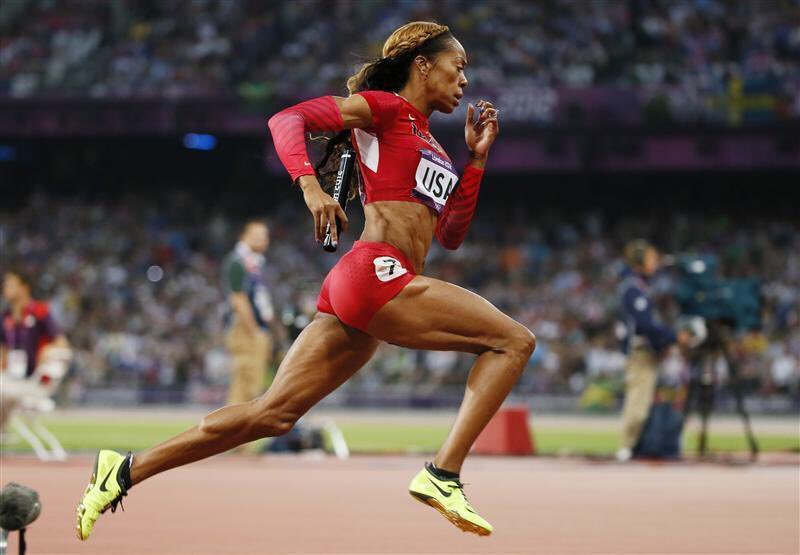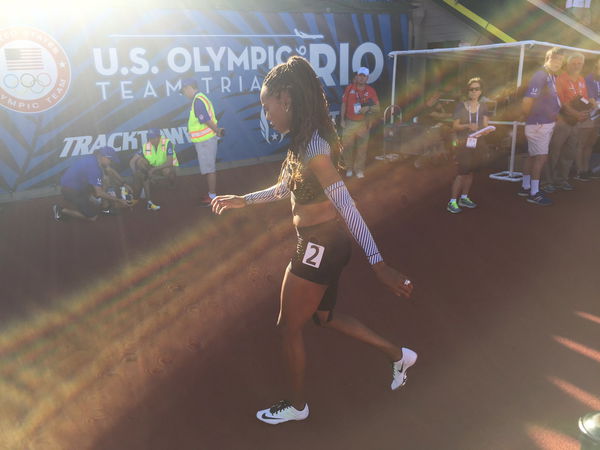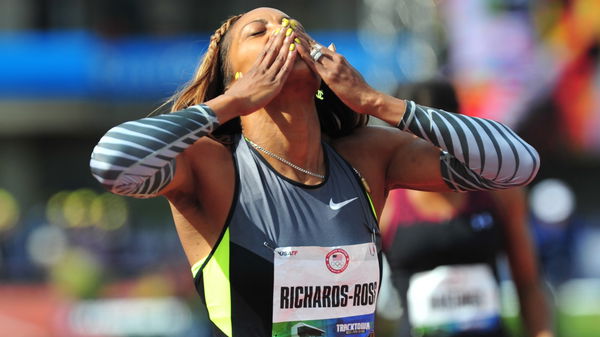

“No group track. It was hard to find a team.” Those words, quietly spoken, held the weight of an athlete’s early days navigating the American track and field system alone. Well, she had arrived in the U.S. at just 12 years old, leaving behind not just a home but a legacy in the making. Back in Kingston, Jamaica, she ran the tracks of Vaz Preparatory School, even getting the rare thrill of competing at the iconic National Stadium. For most kids, that’s a once-in-a-lifetime moment. For her, it was just the beginning. But the move to the U.S.? It wasn’t about chasing faster tracks or shinier medals. It was about family. About sacrifice. About starting over. And though she eventually found success stateside, the journey wasn’t paved in gold. In fact, the picture only got darker before the light peeked through.
Watch What’s Trending Now!
Now, that’s the story of Sanya Richards-Ross—a name forever etched in Olympic and Nike history. In 2004, she signed with Nike at just 18 or 19 years old. A move that, by all accounts, changed everything.
“I won freshman year, came back sophomore year, should have won,” Sanya recalled on the Meet The Mitchells podcast. “I had an injury before. So my stock was a little bit down, but I still thought it was a good time because it was my Olympic year, 2004.” Well, she didn’t just bounce back. She won. She made the Olympic team. Nike came calling. “They picked up the rest of my schooling,” she said—almost casually. That kind of support? That’s rare. That’s lucky. Sanya Richards-Ross didn’t deny it either.
ADVERTISEMENT

ADVERTISEMENT
“When you’re in the college system, they want to win NCs, they want to win conference,” she explained. “And when you have athletes like us who can do it all, you can sometimes see athletes burnout who have a lot of talent.” Yes, burnout. That’s the quiet killer in collegiate athletics. The system demands everything from young athletes—medals, records, titles—sometimes at the cost of their own long-term careers. “We got lucky,” Sanya admitted, in the meantime. “Being in and out in two years, and then being able to parlay our success in college onto the pros, I think was a benefit for us.” So what’s the real difference between going pro and staying in college?
“It’s very different when you become pro,” the past Olympic champion said. “When the coach’s only priority is you. They want you to become a world champion. They want you to become an Olympic champion.” But for the ones still grinding through the college circuit? The story shifts.
ADVERTISEMENT
“When you talk about the burnout thing,” Sanya added, “it can be really hard… because the coach’s priority is the school winning.” And for many rising stars who don’t land that dream pro deal early? The dream can dim long before it shines. Do you want evidence regarding the burnouts in NCAA track and field sports?
The dark picture of burnout in track and field sports is real
According to an NCAA Student-Athlete Well-Being Study released in 2022, mental health concerns among college athletes are 1.5 to two times higher than they were before the COVID-19 pandemic. Let that sink in. Not 10%, not even 50%—double. On the other hand, the study, conducted in fall 2021 and released the following May, surveyed nearly 10,000 student-athletes across all three NCAA divisions. It was a follow-up to earlier reports from 2020, but this time, the numbers painted an even bleaker picture.
ADVERTISEMENT
Across the board, student-athletes reported skyrocketing levels of mental exhaustion, anxiety, and emotional distress. And the burden wasn’t evenly shared. The weight fell heaviest on women. On athletes of color. On LGBTQ+ athletes. On those from families struggling to make ends meet. These groups—already carrying more invisible loads—were also the most likely to report feeling overwhelmed, burnt out, or simply not okay. Ultimately, it wasn’t just about the grind on the track or the pressure in the pool. It was about everything else that came with being a student-athlete in a world still reeling from a pandemic—expectations, scholarships, team dynamics, academic performance, and often, a silence around asking for help.

ADVERTISEMENT
What the study made clear is something many athletes already knew too well: being strong doesn’t mean being invincible. And in a system where college glory often matters more than long-term well-being, the question remains—who’s looking out for the athlete when the lights are off and the stands are empty?
ADVERTISEMENT
ADVERTISEMENT
ADVERTISEMENT

